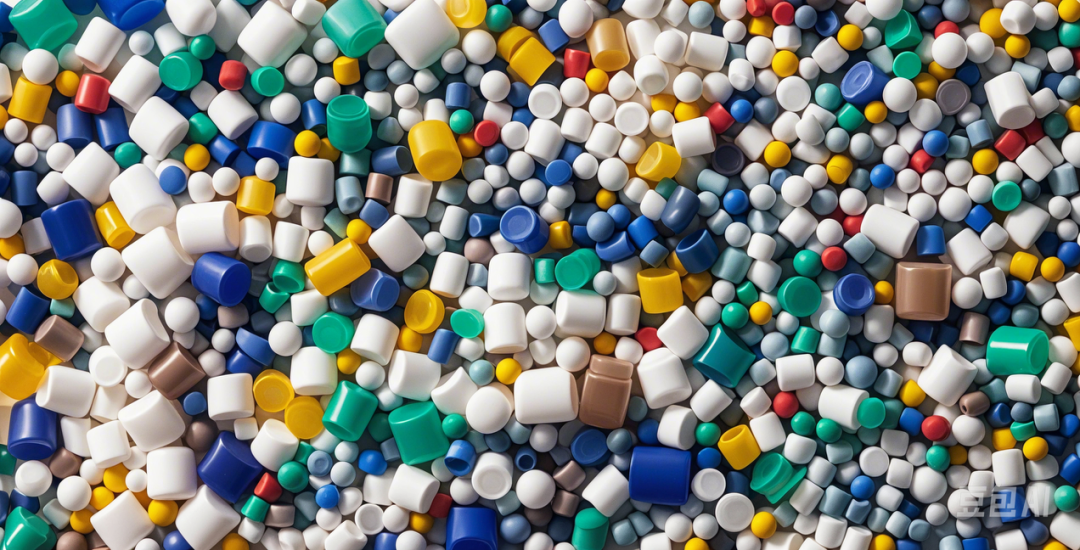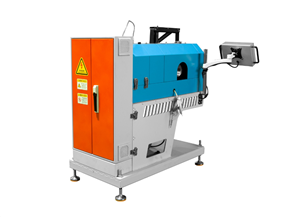Plastic Recycling: The Green Code to Crack "White Pollution"
In the nearly hundred years since plastic was invented, the total amount of plastic manufactured by humans has exceeded 10 billion tons. When these materials that once brought convenience to life become mountains of garbage, plastic recycling has evolved from an environmental issue into a survival topic concerning the sustainable development of the earth. Data shows that less than 10% of plastic worldwide is effectively recycled, while about 8 million tons of plastic flow into the ocean every year, forming a shocking "Eighth Continent". Plastic recycling technology is becoming the key to cracking this dilemma.

The Technological Revolution of Plastic Recycling
Physical Recycling:
The Most Mature Circular Path Physical recycling technology directly processes waste plastics into recycled plastic pellets through processes such as cleaning, crushing, and granulation. This method preserves the chemical structure of plastics and is widely used in packaging, building materials, and other fields. Take PET plastic bottles as an example: after crushing, hot-melting, drawing, and other treatments, they can be made into polyester fibers for clothing production. A recycling enterprise in Zhejiang converts 50,000 tons of waste beverage bottles into outdoor clothing fabrics every year through physical recycling technology, equivalent to reducing 200,000 tons of carbon dioxide emissions.
Chemical Recycling: Molecular-Level Remodeling
Chemical recycling technology decomposes plastics into monomers or small molecules through depolymerization reactions, achieving "reverse synthesis" of materials. Pyrolysis technology heats plastics to 400-600℃ in an oxygen-free environment, generating fuel oil and chemical raw materials; alcoholysis technology converts PET plastics into dimethyl terephthalate and ethylene glycol, which are reused to manufacture new plastics. The chemical recycling process developed by Toray Industries in Japan can purify recycled polyester fibers to 99.9%, meeting the standards for food-grade packaging materials.
Biological Recycling: Collaboration with Natural Forces
Biological recycling uses microorganisms or enzymes to degrade plastics, with representative technologies including biological synthesis of polylactic acid (PLA) and microbial fermentation of PHA. A Danish start-up has developed enzyme preparations using marine microorganisms that can decompose polyurethane, shortening the degradation cycle of discarded sneakers from hundreds of years to months. These biobased plastics not only have good degradability but can also return to natural cycles through composting.
The Industrial Practices of Plastic Recycling
Circular Closed-Loop in Packaging
The food and beverage industry took the lead in establishing a recycling system for plastic packaging. The Coca-Cola Company's "Bottle Recycling Program" processes recycled PET bottles into new ones, achieving closed-loop utilization of packaging materials. According to data from the European Packaging Federation, through optimized design and recycling, the plastic packaging recycling rate in the EU region has increased from 30% in 2010 to 55% in 2023.
Innovative Applications in Building Materials
Recycled plastics are combined with materials like concrete and wood to develop new building materials that integrate strength and environmental friendliness. The world's first plastic road built in the Netherlands used 16 tons of recycled plastic, with abrasion resistance 30% higher than traditional asphalt pavements. Recycled plastics are also used to manufacture outdoor products such as fences and floor tiles, reducing production costs while decreasing reliance on natural materials.
Green Transformation in the Fashion Industry
Fast-fashion brand ZARA launched a "Clothing Recycling Program," processing recycled polyester fiber garments into new fabrics. French luxury brand Hermès has started using recycled nylon for bag linings. These practices drive the fashion industry's transition from a "linear economy" to a "circular economy"—it is estimated that by 2030, recycled materials will account for 25% of the textile industry's raw materials.
Challenges and Breakthroughs in Plastic Recycling
Currently, plastic recycling faces challenges such as low sorting efficiency, high recycling costs, and insufficient market acceptance. The mixture of plastic types makes it difficult for mechanical sorting accuracy to exceed 85%, while the high-temperature and high-pressure conditions required for chemical recycling lead to persistently high energy consumption. A European Union study shows that the production cost of recycled plastic is 15-20% higher than that of virgin plastic.
However, technological innovations are breaking these bottlenecks. The AI visual sorting system developed by Germany's Fraunhofer Institute can identify different types of plastics with 99% accuracy. The U.S. company LanzaTech uses synthetic biology technology to convert plastic waste into aviation fuel, generating economic benefits during the recycling process. At the policy level, an increasing number of countries are implementing the "Extended Producer Responsibility System," requiring enterprises to assume environmental responsibilities throughout the product life cycle.
With technological iteration and policy improvement, plastic recycling will exhibit three major trends: intelligent sorting systems will achieve precise classification of plastics, and blockchain technology can trace the origin and flow of recycled materials; biological recycling technologies will develop more high-performance degradable materials; the "product-as-a-service" model will push enterprises to shift from selling plastic products to providing circular services. McKinsey predicts that by 2050, the global plastic recycling market size will exceed $1 trillion, and the plastic recycling rate is expected to rise to 90%.
When plastic is no longer a burden on the environment but a sustainably utilized resource, humanity will truly achieve harmonious coexistence with nature. The rebirth of every plastic bottle is a commitment to a green future; every technological breakthrough is writing a new chapter in sustainable development. Plastic recycling is not only an opportunity for industrial transformation but also a responsibility of humanity towards the earth.




